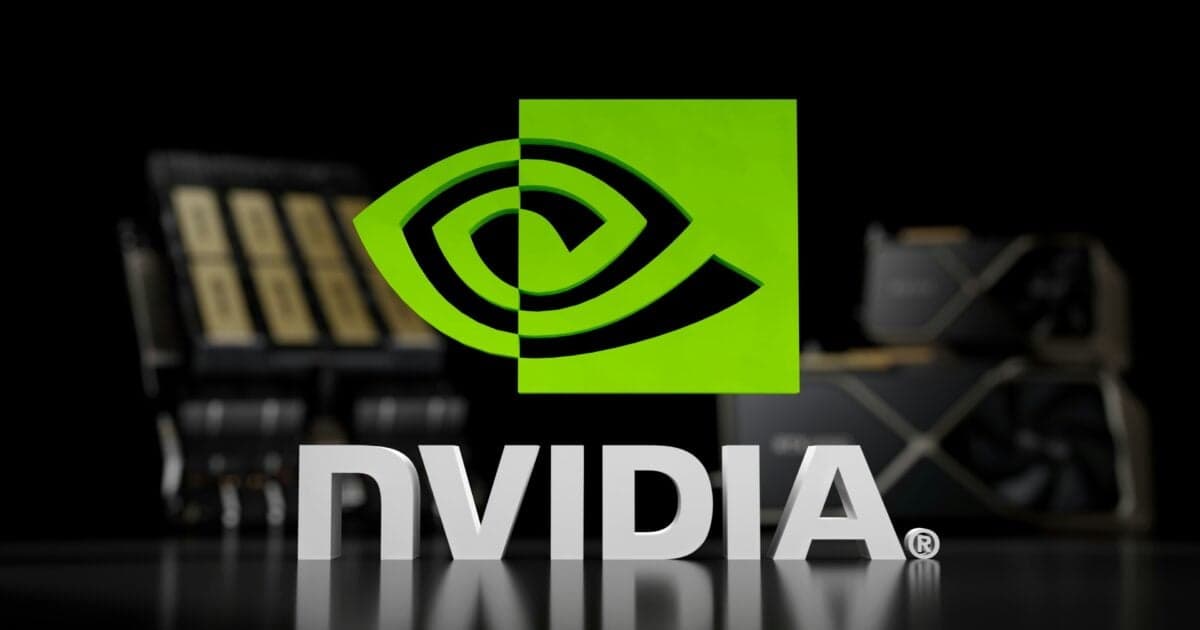Nvidia's $100 Billion OpenAI Investment Is the Next Blockbuster AI Deal


Another day, another multibillion-dollar deal to fund the massive artificial intelligence ("AI") build-out.
On Monday, Nvidia (NVDA) announced a plan to invest as much as $100 billion into OpenAI – the cutting-edge AI firm, known for its ChatGPT product.
The deal will help OpenAI fund more data-center projects. Those are necessary for the massive amount of compute it needs to train and run its complex models. And of course, it'll use millions of Nvidia chips.
Seeing major deals between suppliers and customers might feel a tad incestuous. But as we'll see, it's just another proof point that the huge amount of AI spending we've seen isn't over yet. Instead, we're just hitting the tip of the iceberg.
The Nvidia/OpenAI Deal Is a Clear Win-Win
The deal between Nvidia and OpenAI isn't final yet. But the companies said they've signed a letter of intent. And from what we know now, it's a clear win-win for both companies.
Nvidia will get OpenAI equity in exchange for cash investments. The injections will come in phases... with the first $10 billion heading to OpenAI when the deal finalizes.
Again, this is a win-win for both companies. OpenAI needs mountains of cash to train and run its models. The company expects to burn through more than $8 billion in cash in 2025. And that figure rises to a staggering $115 billion through 2029.
The company raised $40 billion earlier this year. That's the largest private technology funding round in history. But it still needs plenty of cash to stay a leader in the world of AI.
Nvidia wins in the arrangement, too. OpenAI is already a large customer, relying on Nvidia's state-of-the-art GPUs to train and run its models. This deal should solidify Nvidia's place as OpenAI's main supplier. Plus, it gets shares of the hottest AI company in the private market.
OpenAI needs cash. And Nvidia has it. The company had a net cash position of $46 billion in its most recent earnings release. And analysts expect it to earn $99 billion of free cash flow in 2026 and another $146 billion in 2027.
In other words, Nvidia can afford the investment. And it should prove strategically wise as the AI build-out continues in the years ahead.
The nitty-gritty of the deal isn't public. But investors liked the news. Nvidia was up 4% on the day of the announcement.
This deal – while massive – isn't unique in today's market. Multibillion-dollar deals have quickly become the norm.
In fact, this isn't even Nvidia's only deal this month.
Nvidia's New Collaboration with Intel
Nvidia has been busy in September. The OpenAI deal is one of two multibillion-dollar investments it announced this month.
On September 18, it announced a plan to invest $5 billion into fellow chipmaker Intel (INTC).
Intel has struggled for years. The company used to have a stranglehold on the data-center market (using CPUs). But now that moat is eroding, and the company is fighting to maintain its relevance.
Intel isn't dead, though. And Nvidia needs its expertise to efficiently build the best data-center products for its customers.
In simple terms, the AI build-out mostly needs GPUs... but it requires specific CPUs as well. Here's what Nvidia CEO Jensen Huang said about the two companies working together...
This historic collaboration tightly couples NVIDIA's AI and accelerated computing stack with Intel's CPUs and the vast x86 ecosystem – a fusion of two world-class platforms. Together, we will expand our ecosystems and lay the foundation for the next era of computing.
Nvidia is the poster child for the AI boom that's underway. A good chunk of the massive spending taking place is on Nvidia GPUs. And the company is happy to strategically work with competitors and customers to keep the train rolling.
The Intel deal is small compared with Nvidia's investment in OpenAI. But it shows that we're still in the middle innings of this cycle.
It's not just Nvidia. OpenAI and Oracle recently shocked Wall Street with the massive agreement between the two AI giants...
OpenAI's Monstrous $300 Billion Deal
Few investors thought of Oracle (ORCL) as a hot AI stock a month ago. But that quickly changed when the company's massive deal with OpenAI hit the newswire.
The deal is the largest in corporate history. OpenAI will spend $300 billion with Oracle over five years, beginning in 2027. That's $60 billion in annual revenue, a little more per year than Oracle brought in over the past 12 months.
In exchange, Oracle will provide OpenAI with 4.5 gigawatts of computing capacity. That's enough to power about 4 million homes.
The deal caught a lot of investors off guard. Many still think of Oracle as an old-guard technology company... focused on database technology and enterprise software. But that's no longer true.
The reality is that Oracle has spent the past few years building hyperspecific cloud infrastructure. This second-generation cloud service contains massive GPU clusters. It's built specifically for AI workloads.
That refocus is what drove Oracle's stock higher in recent years. And the success of its product is what brought OpenAI to the table... and eventually allowed Oracle to land this monster deal.
Many have questioned OpenAI's ability to pay Oracle $60 billion per year. But OpenAI landed the Nvidia investment less than two weeks later. So clearly, the company can fund itself in the current market.
Either way, the size and scope of this deal show the massive amount of compute we need to make the AI revolution happen. And of course, the entire picture is much larger than just OpenAI and Oracle.
Let's look at the big picture now to see just how large AI will grow in the coming years...
AI Spending Grows Into the Multitrillions
So far, we've talked about big deals in AI. But we haven't touched on what's probably the most important piece of this boom... the hyperscalers.
These are the largest publicly traded technology companies... the ones responsible for the majority of the AI build-out that's happening.
Specifically, we'll look at Microsoft (MSFT), Meta Platforms (META), Google (GOOGL), and Amazon (AMZN). All four have poured tens of billions into AI spending. And they're nowhere near done.
Meta announced second-quarter earnings on July 30. It spent $17 billion on capital expenditures in the quarter. That's nearly double the $8.5 billion it spent in the second quarter of 2024. And the company says it will spend between $66 and $72 billion in total for 2025.
Microsoft is a similar story. It spent $17 billion in capex in the most recent quarter. And it announced that it plans to spend up to $30 billion in just the next quarter. Overall estimates put spending at around $70 billion over the next 12 months.
Google is on the same trajectory. It spent $22.4 billion in the most recent quarter. And when it announced those results, it raised its total spending for 2025 to $85 billion.
Finally, Amazon is the biggest spender of the bunch. It spent $32 billion in capex in the most recent quarter. And like the others, it's not slowing down. The company says it expects similar spending through the end of 2025. And that means it'll spend more than $100 billion this year alone.
With just these four hyperscalers, we're looking at hundreds of billions in AI spending this year. And that includes spending from companies like Oracle, OpenAI, Nvidia, and everyone else.
If we build a holistic look at AI spending, the numbers get even larger. Here's what estimates look like over the next few years...
This is a mountain of spending... Spending that never would have happened if AI hadn't hit the scene.
These estimates show total spending growing well past $1 trillion. And it seems safe to say we'll be looking at a multitrillion-dollar spending boom by the end of the decade.
There are two ways to look at that... as something to fear... or as a major opportunity. I suggest you view it as the latter...
Trillions of Spending Ensures a Continued Market Boom
I'm not saying this won't end badly. Most technology booms follow the same trajectory...
An exciting new opportunity leads to a massive infrastructure build-out. That fuels a speculative mania. But we always end up overbuilding. And that leads to a crash.
There's a good chance the AI boom follows a similar path. But we're nowhere near the end...
The Economist notes that Britain experienced a railway boom in the 1840s. From 1844 through 1847, investment in railways grew from 5% of GDP all the way to 13%. That was an unsustainable level, and it led to a painful bust.
We're not near those unsustainable levels right now. AI spending in total is around 3% to 4% of GDP over the past four years. Said another way, investment needs to grow fivefold to hit the excesses we saw in Britain's railway boom.
That probably will happen by the end of the decade. But it won't happen overnight. And in the meantime, this massive amount of AI spending will fuel a continued boom in the U.S. stock market.
We'll see plenty of blockbuster, multibillion-dollar AI deals in the meantime. That's expected. That's a good thing. It's when the deals dry up... or the market starts punishing big spending... that we should be worried.
We're not there yet. Not even close. And that means the AI boom and stock bull market can continue.
Good investing,
Brett Eversole




